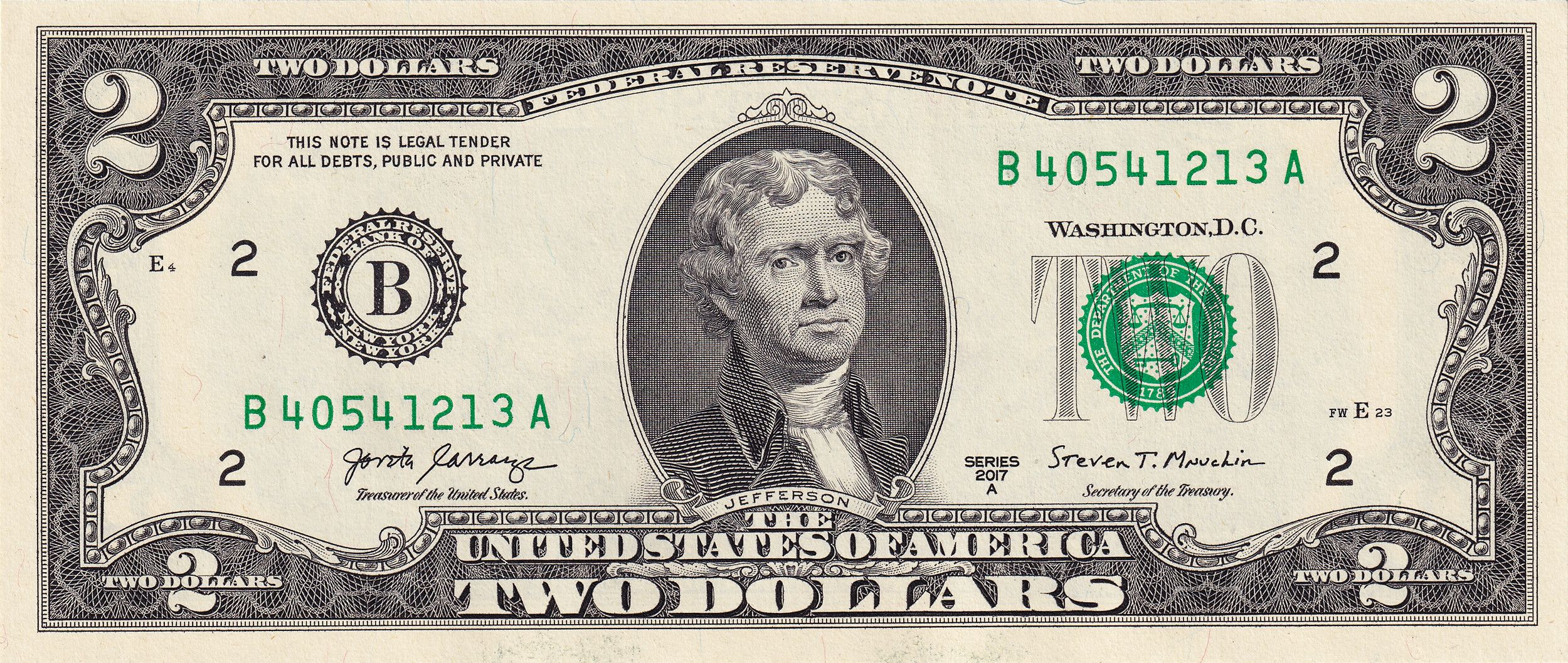
Quick Facts
| Origin | United States of America |
| ISO Code | USD |
| Issue Year | 2009 |
| Exchange Rate | N/A |
The American dollar: it is the most popular currency for reserves and trade in the world. It has even replaced the local currency in some countries such as Panama and Ecuador. No further introduction is needed really, but there is one denomination (value) of this currency that is still printed but sees very little use, which is the 2 dollar bill.
To understand why the Tom is so uncommon, we need to go back in time to the 1860s, when the first $2 bills were printed alongside the first $1 bills. At the time, most people bought what they needed for a dollar or less, so immediately not many used the $2 bill.
By the 1930s, inflation had increased enough to make the Tom (named after the portrait of Thomas Jeffeson on the bill) a somewhat practical denomination, but then came the Great Depression. Money was now scarce and even a measly 2 dollar bill was too much for people to withdraw. This caused a chain reaction in which production of the denomination reached new lows by the 1950s and in response, people began hoarding these seemingly scarce bills as collector's items, making it ever more scarce than before.
Throughout that time, the bill also became associated with various urban legends that contributed to people's aversion to using it. For example, it is said that politicians would bribe people to vote for them with Toms. Another legend states that race track bets were usually $2, so whoever got the prize pool of $2 bills would quickly be spotted as a gambler when spending their prize.
These days, there are no relevant stigmas associated with the $2 bill and are not used much because it is too close in value to the $1 bill.